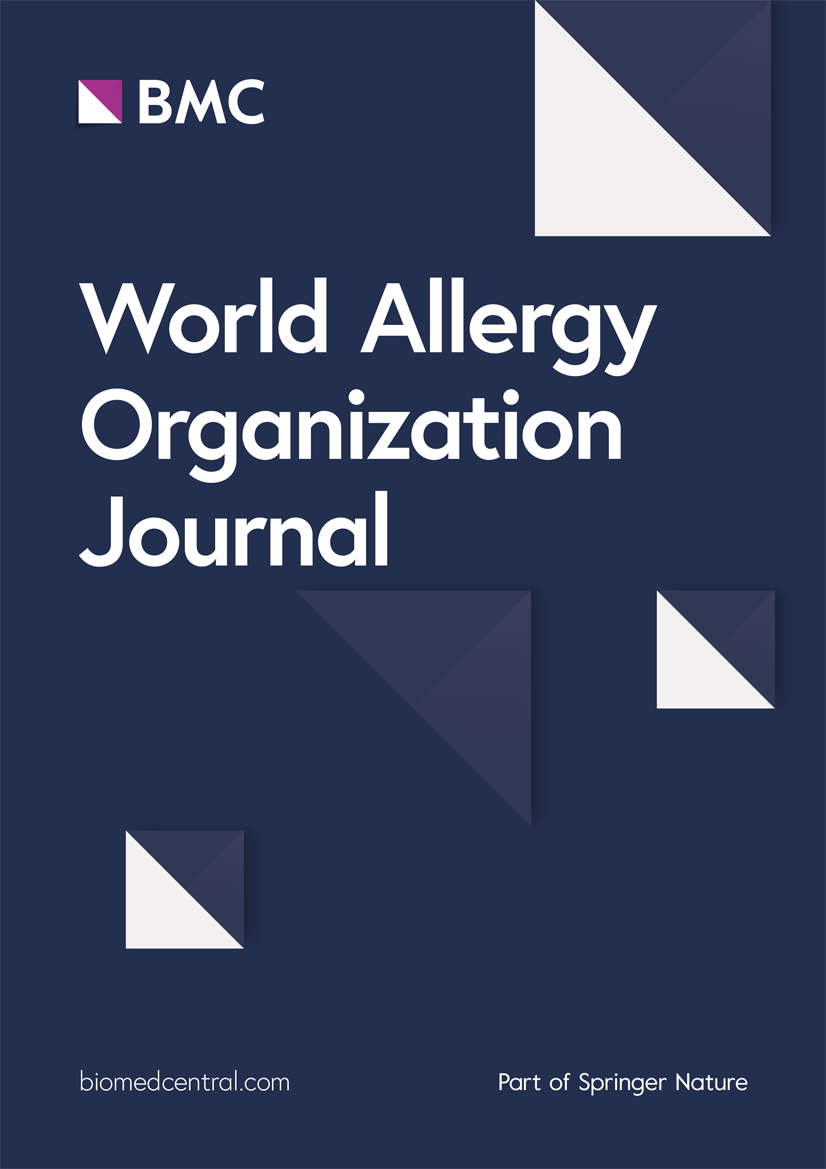对狗和猫共同敏感的狗专用主人的1特异性IgE测量
IF 3.9
2区 医学
Q2 ALLERGY
引用次数: 0
摘要
背景:罪魁祸首过敏原的诊断取决于暴露、暴露时的症状和特异性IgE (sIgE)的存在。宠物过敏原是粘性的,可以使没有收养史的个体敏感。专门养狗的人经常同时展示狗(e5)和猫的皮屑sIgE (e1)。我们评估了Fel d1 sIgE (e94)的测量是否可以通过交叉反应区分猫的真敏化和假阳性。方法选取31例专门养狗的呼吸道过敏患者作为研究对象。免疫cap检测e5、e1和e94。ELISA法测定交叉反应性。结果81%(25/31)患者e5和e1同时阳性,8例患者e94同时阳性。在e94阳性中,猫皮屑对猫sIgE的最大抑制作用更高(94%对88%),IC50比狗皮屑低(6.5对737.9 BAU/mL)。相反,在e94阴性的情况下,与猫皮屑相比,狗皮屑对猫皮屑sIgE的最大抑制作用更高(71.9%对56.2%),IC50更低(172对1947 BAU/mL)。在e94阳性组中,狗皮屑对狗sIgE的最大抑制作用高于猫皮屑(91.5 vs 76.1%), IC50 (10.6 vs 1679 BAU/mL)低于猫皮屑,而在e94阴性组中,猫皮屑的IC50无法确定。结论:即使在只养狗的个体中,对猫的真正共敏也很明显。e94阳性结果可以通过交叉反应区分这些患者的真实猫致敏和假阳性,强调了综合过敏评估的重要性。本文章由计算机程序翻译,如有差异,请以英文原文为准。
Fel d 1 specific IgE measurement for dog exclusive owners co-sensitized to dog and cat
Background
The diagnosis of the culprit allergen depends on exposure, symptoms at exposure, and the presence of specific IgE (sIgE). Pet allergens are sticky and can sensitize individuals without adoption history. Exclusive dog owners frequently exhibit both dog (e5) and cat dander sIgE (e1). We assessed whether the measurement of Fel d 1 sIgE (e94) can discriminate true cat sensitization from false positivity by cross-reactivity in the exclusive dog owners.
Methods
Thirty-one patients with respiratory allergies who exclusively owned dogs were enrolled for this study. e5, e1, and e94 were measured with ImmunoCAP. ELISA inhibition was performed to assess cross-reactivity.
Results
About 81% of patients (25/31) were both e5 and e1 positive, and 8 were also positive for e94. In the e94 positive, cat dander exhibited higher maximum inhibition of cat sIgE (94% vs 88%) and demonstrated lower IC50 (6.5 vs 737.9 BAU/mL) compared to dog dander. Conversely, in the e94 negative, dog dander demonstrated higher maximum inhibition of cat dander sIgE (71.9% vs 56.2%) and lower IC50 (172 vs 1947 BAU/mL) compared to cat dander. In the e94 positive, dog dander exhibited higher maximal inhibition for dog sIgE (91.5 vs 76.1%) and lower IC50 (10.6 vs 1679 BAU/mL) compared to cat dander, whereas in the e94 negative, the IC50 for cat dander could not be determined.
Conclusions
Genuine co-sensitization to cats is notable even in individuals who exclusively own dogs. Positive e94 results could discriminate authentic cat sensitization from false positivity by cross-reactivity in these patients, underscoring the importance of comprehensive allergy assessment.
求助全文
通过发布文献求助,成功后即可免费获取论文全文。
去求助
来源期刊

World Allergy Organization Journal
Immunology and Microbiology-Immunology
CiteScore
9.10
自引率
5.90%
发文量
91
审稿时长
9 weeks
期刊介绍:
The official pubication of the World Allergy Organization, the World Allergy Organization Journal (WAOjournal) publishes original mechanistic, translational, and clinical research on the topics of allergy, asthma, anaphylaxis, and clincial immunology, as well as reviews, guidelines, and position papers that contribute to the improvement of patient care. WAOjournal publishes research on the growth of allergy prevalence within the scope of single countries, country comparisons, and practical global issues and regulations, or threats to the allergy specialty. The Journal invites the submissions of all authors interested in publishing on current global problems in allergy, asthma, anaphylaxis, and immunology. Of particular interest are the immunological consequences of climate change and the subsequent systematic transformations in food habits and their consequences for the allergy/immunology discipline.
 求助内容:
求助内容: 应助结果提醒方式:
应助结果提醒方式:


